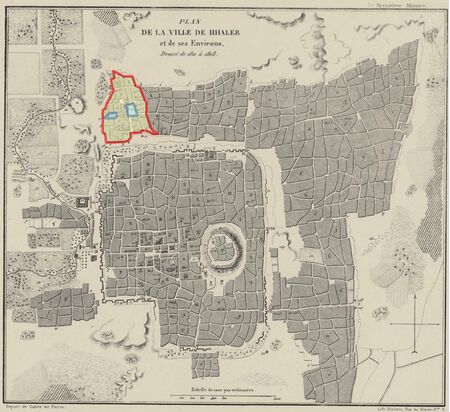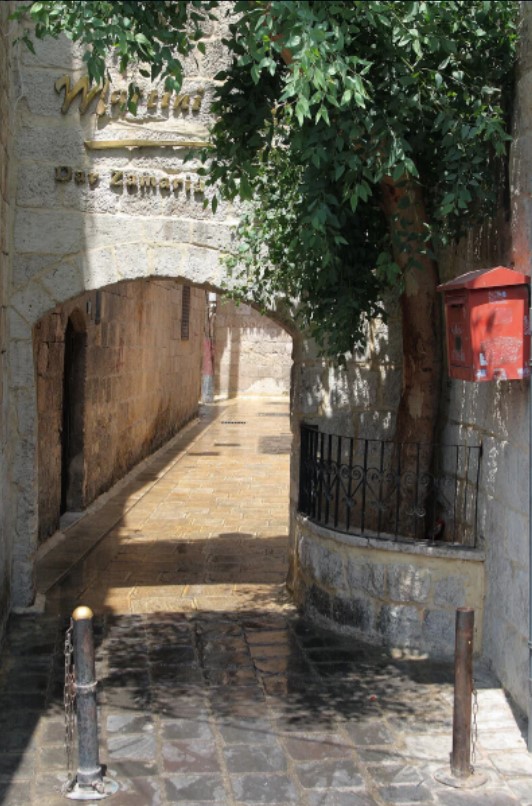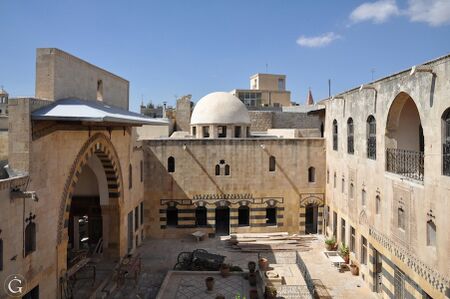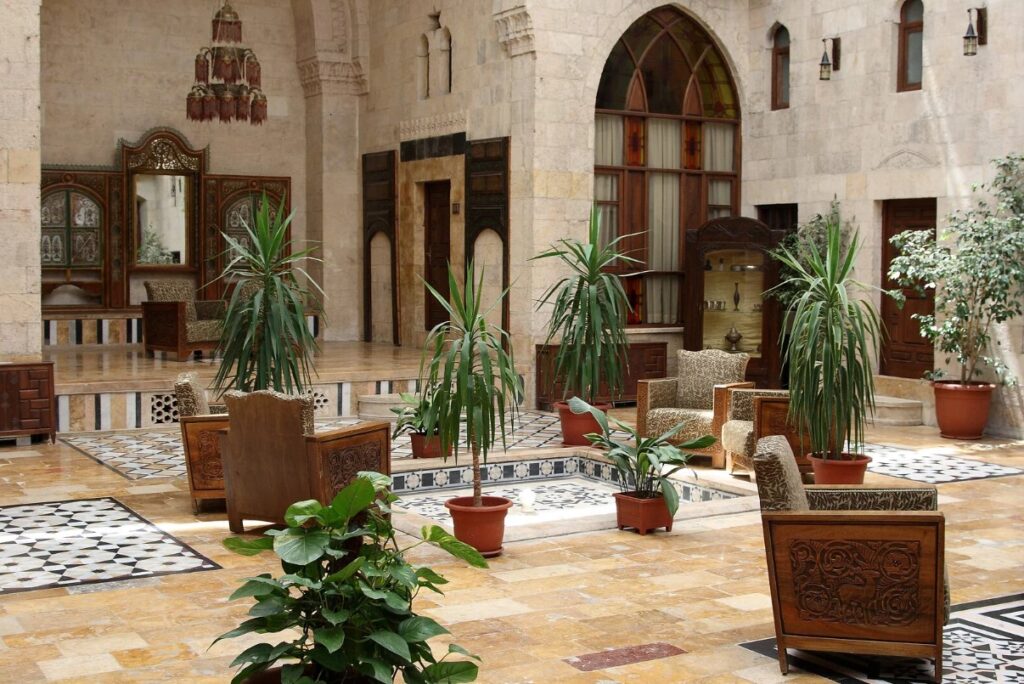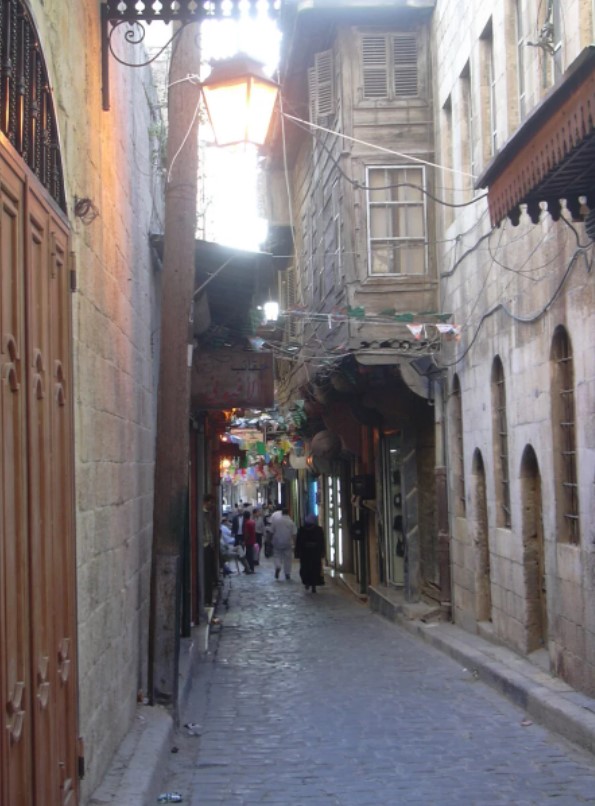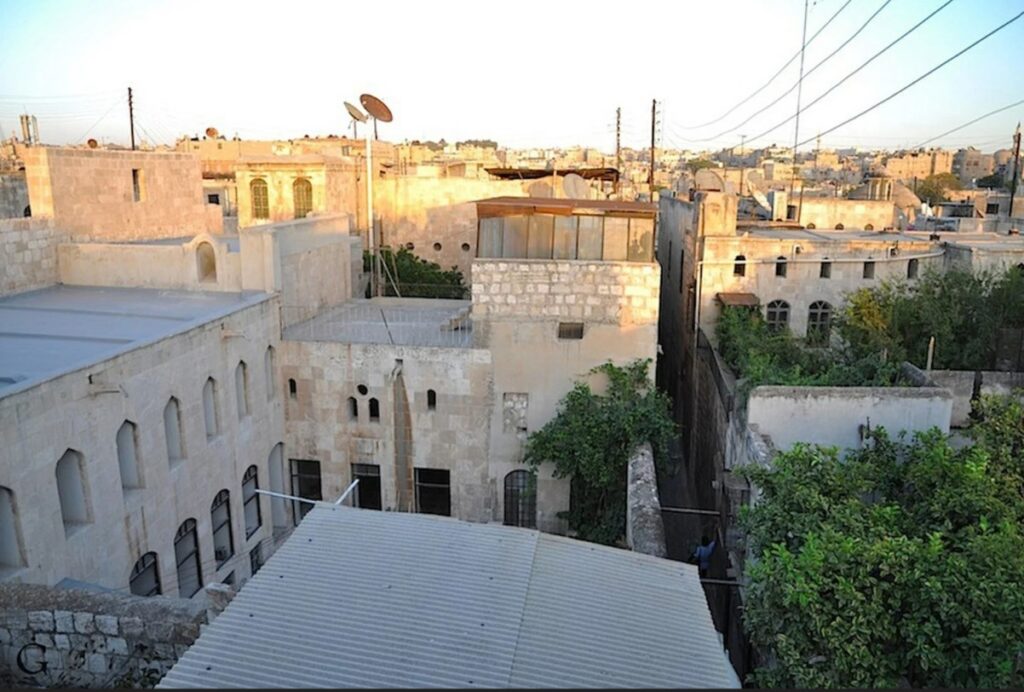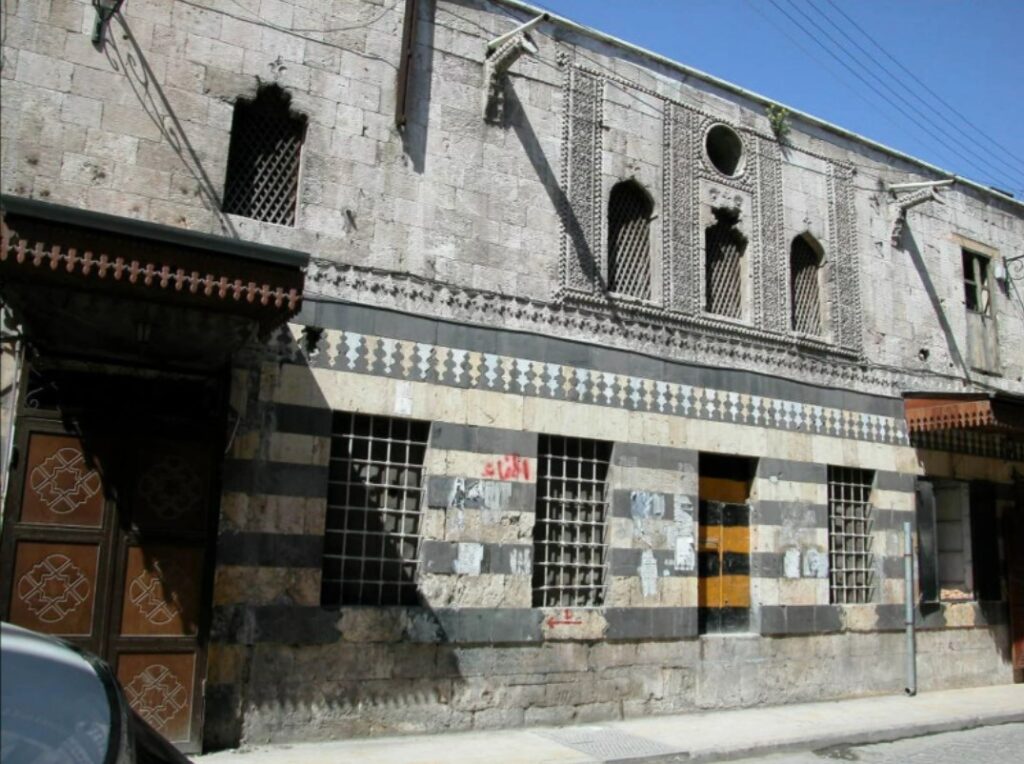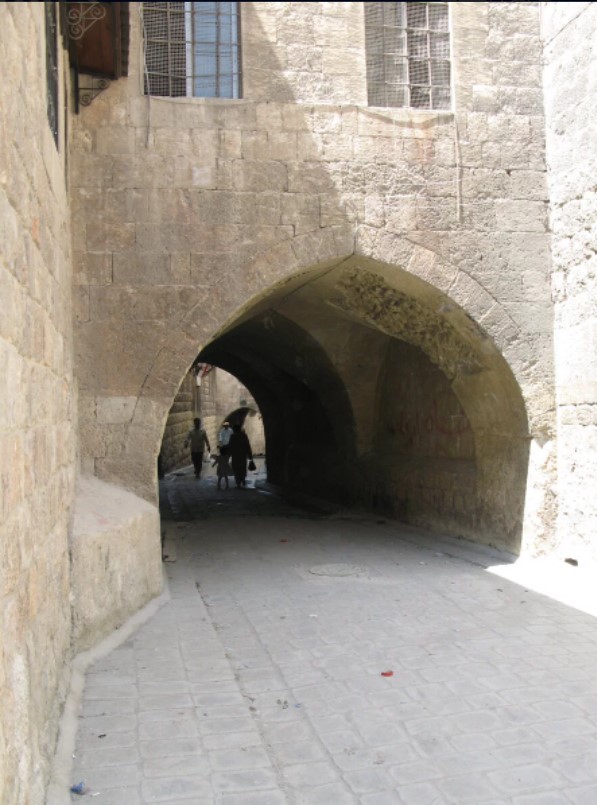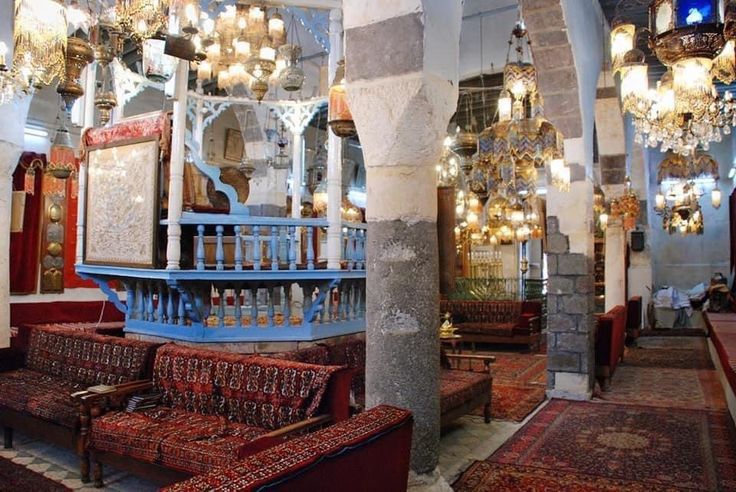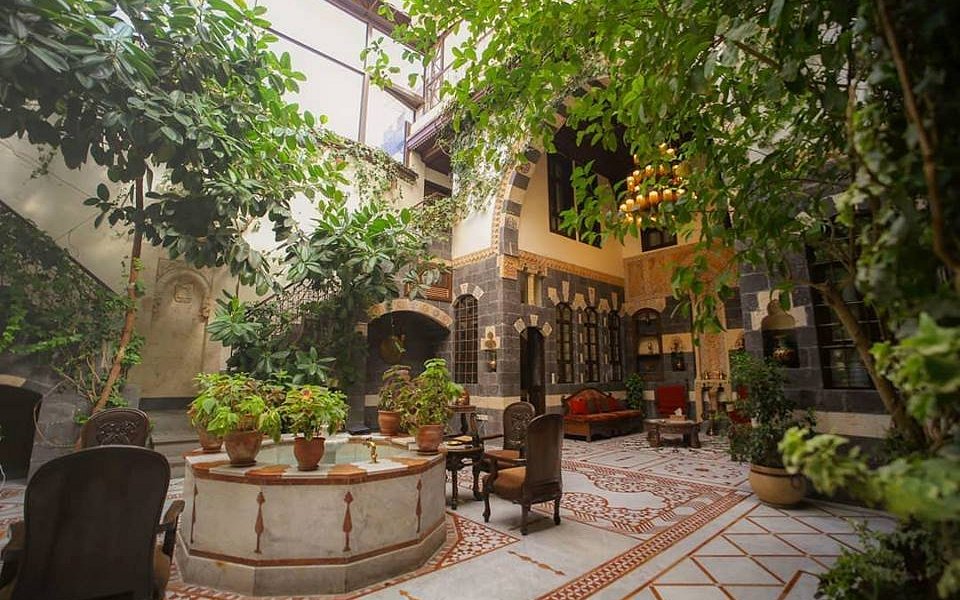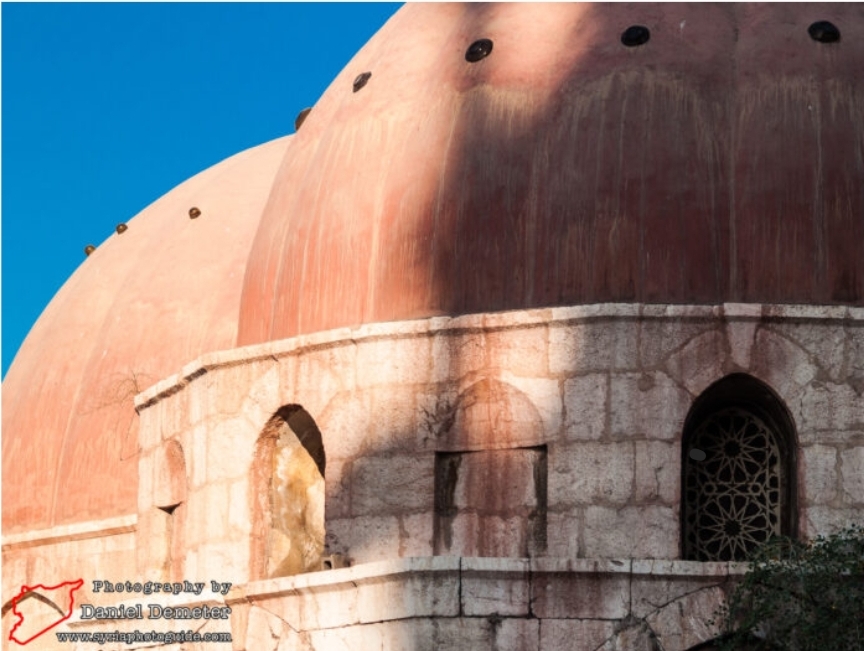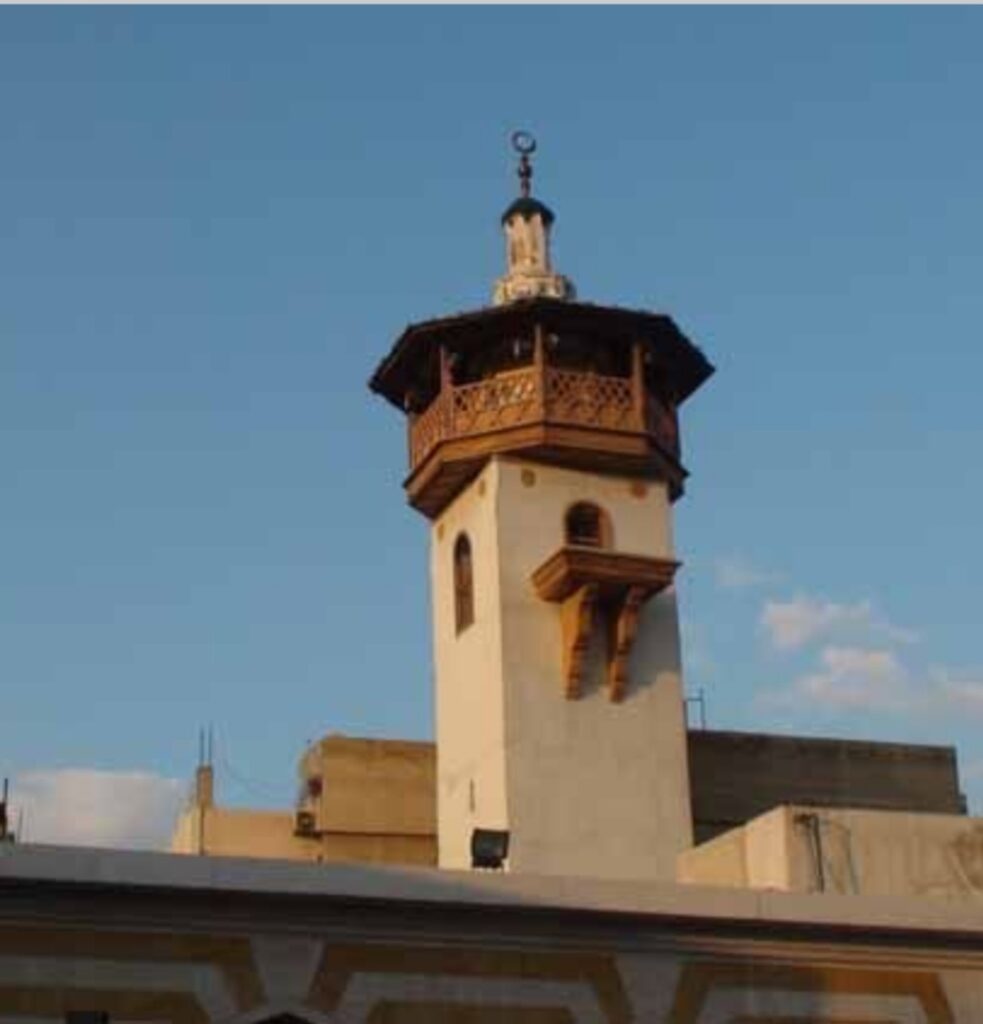The al-Jadidah neighborhood of Aleppo is one of the most prominent historical neighborhoods, characterized by its narrow, winding alleys, houses with inner courtyards, richly decorated churches, and palaces reflecting the Syrian-Ottoman architectural style. The neighborhood emerged in the late 14th century AD, following the displacement of Christians from the Ancient City after Timur’s conquest of Aleppo in 1400 AD. They then returned and settled outside the city’s northern walls, leading to the establishment of the al-Jadidah neighborhood.
At the end of the Mamluk period, the al-Jadidah neighborhood was a small suburb containing a few shops, located outside the northern walls of Aleppo, with cemeteries and warehouses nearby. The neighborhood gradually developed, as it was situated on the roads connecting Bab al-Nasr with the villages north of the city, until it was incorporated into the city of Aleppo. By the end of the 14th century, the neighborhood was equipped with mosques and buildings, and water canals were extended to it, as a new water canal was built in 1490–1491, which contributed to the expansion of the al-Jadidah neighborhood and the opening of several private baths.
The al-Jadidah neighborhood is a center for historic churches in Aleppo, where most of the newly built or expanded churches are located around Farhat Square near the Sulaibiyeh Intersection. The most prominent of these include:
The Armenian Forty Martyrs Cathedral: Expanded in 1490.
The Greek Orthodox Church: Dating back to the 15th century.
The Maronite Church of St. Elijah: Built in 1873 on the site of an older church.
Maronite and Syriac churches: Dating back to various historical periods.
The al-Jadidah neighborhood includes several historic palaces and houses that have been converted into museums, hotels, and restaurants. The most prominent of these are:
Beit Ghazaleh: One of the largest and best-preserved palaces from the Ottoman period in Aleppo, built in the 17th century.
Beit al-Wakil: Distinguished by its interior courtyard and architectural decorations.
Dar Zamariya: A traditional house reflecting the architectural style of Aleppo.
Beit Ajqbash: Transformed into a museum showcasing daily life in old Aleppo.
In addition to Beit Sadr, Beit Sisi, Beit Basil, and Beit Dalal, these historic houses reflect the neighborhood’s cultural and religious diversity.
The al-Jadidah neighborhood suffered extensive damage during the Syrian war, particularly in 2015, when explosions under al-Hatab Square destroyed large parts of the neighborhood. However, restoration efforts began in 2017. UNESCO, in collaboration with the General Directorate of Antiquities and Museums, conducted a high-resolution collaborative scan of the area’s archaeological sites to facilitate their protection and rehabilitation. The rehabilitation of al-Hatab Square continued until 2018, and reconstruction of several key components of the neighborhood began in 2021.
The al-Jadidah neighborhood is a testament to Aleppo’s cultural and religious diversity, reflecting the city’s rich history and the coexistence of its various sects.
